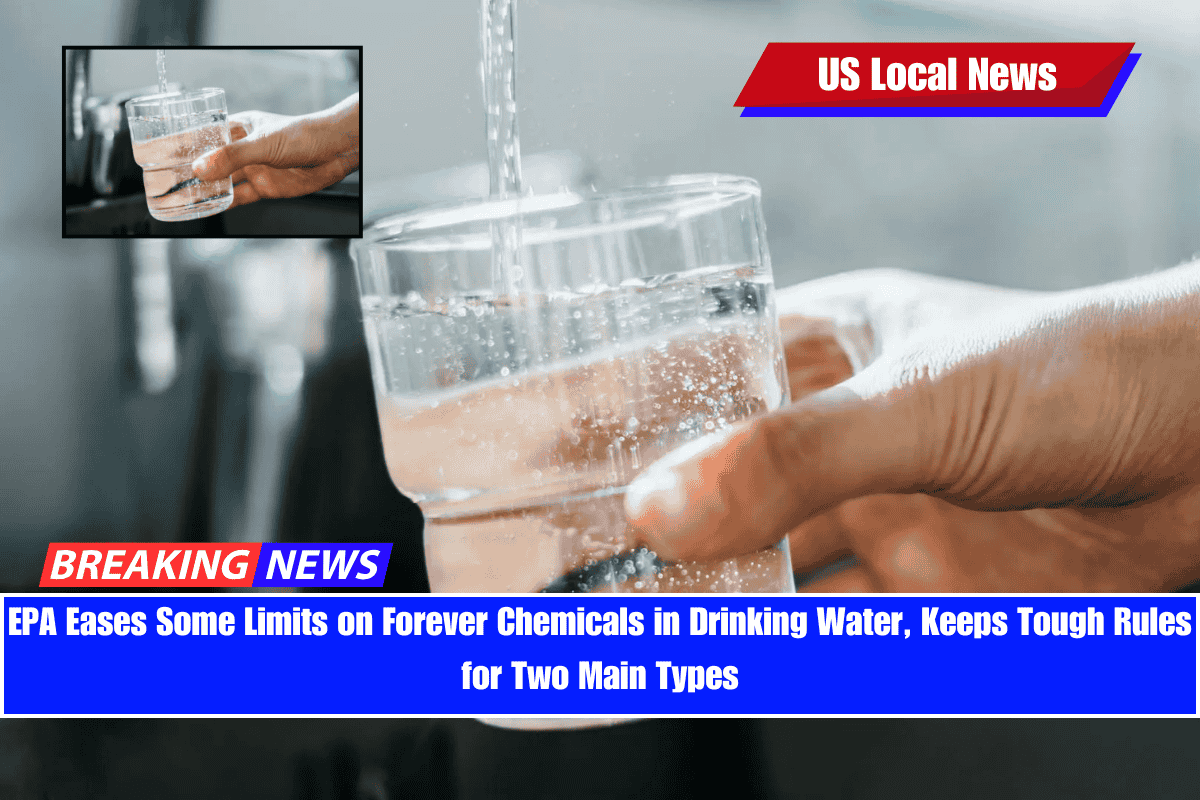The U.S. Environmental Protection Agency (EPA) has announced changes to a rule that limits harmful chemicals called PFAS (short for perfluoroalkyl and polyfluoroalkyl substances) in drinking water.
These chemicals are often called “forever chemicals” because they don’t break down easily and stay in the environment and human body for a very long time.
What’s Changing and What’s Not
In a new move, the EPA said it will weaken or reconsider limits on several lesser-known types of PFAS, including the GenX chemicals found in North Carolina. It will also rethink a rule that covers a mixture of several PFAS types.
However, the EPA will keep strict limits on the two most common and harmful types of PFAS — PFOA and PFOS. The current rule allows only 4 parts per trillion of these chemicals in drinking water. This is the lowest level that can be reliably detected with today’s technology.
The EPA is giving water utilities until 2031 to meet these standards, which is two more years than originally planned.
Why the Rule Is Important
PFAS have been used for decades in products like non-stick cookware, water-repellent clothing, and firefighting foam. While these chemicals are useful, science has shown that they can be harmful even in very small amounts. Long-term exposure is linked to heart disease, certain cancers, and low birth weight in babies.
Because of these risks, the Biden administration introduced the first federal limits for PFAS in drinking water last year, aiming to protect millions of Americans.
Why the EPA Changed Course
The EPA says it is trying to strike a balance between protecting public health and giving water utilities more time to comply. Many utilities complained that installing treatment systems is expensive, especially for small towns. These systems could raise water bills for customers.
The EPA’s updated plan gives utilities extra time and drops some of the limits that faced legal challenges. In fact, several water utilities had already sued the EPA, claiming the agency didn’t have enough evidence to limit the newer PFAS types or regulate PFAS mixtures.
Critics and Supporters Respond
Environmental groups are unhappy with the decision. They say the EPA is going backward and breaking its promise to protect clean water. Erik Olson from the Natural Resources Defense Council called the move illegal, saying the Safe Water Drinking Act doesn’t allow the EPA to loosen rules once they are in place.
On the other hand, many water professionals welcomed the changes. Mike McGill, president of WaterPIO, said the delay gives utilities more time to prepare. He added that some cities have only recently learned they are over the PFAS limit and need time to act.
Still, not everyone is satisfied. Utilities wanted higher limits on PFOA and PFOS, not just more time. Experts like Mark White from CDM Smith believe both sides — water utilities and environmental groups — may continue legal battles over the new rules.
Costs and Government Support
The EPA estimated the original rule would cost about $1.5 billion per year to follow. But the Biden administration has already taken steps to ease that burden.
Under the Bipartisan Infrastructure Law, $9 billion has been set aside to help clean up PFAS. Also, utilities have won big settlements from companies that made these chemicals, like 3M and Chemours, which could help cover some of the costs.











Leave a Reply